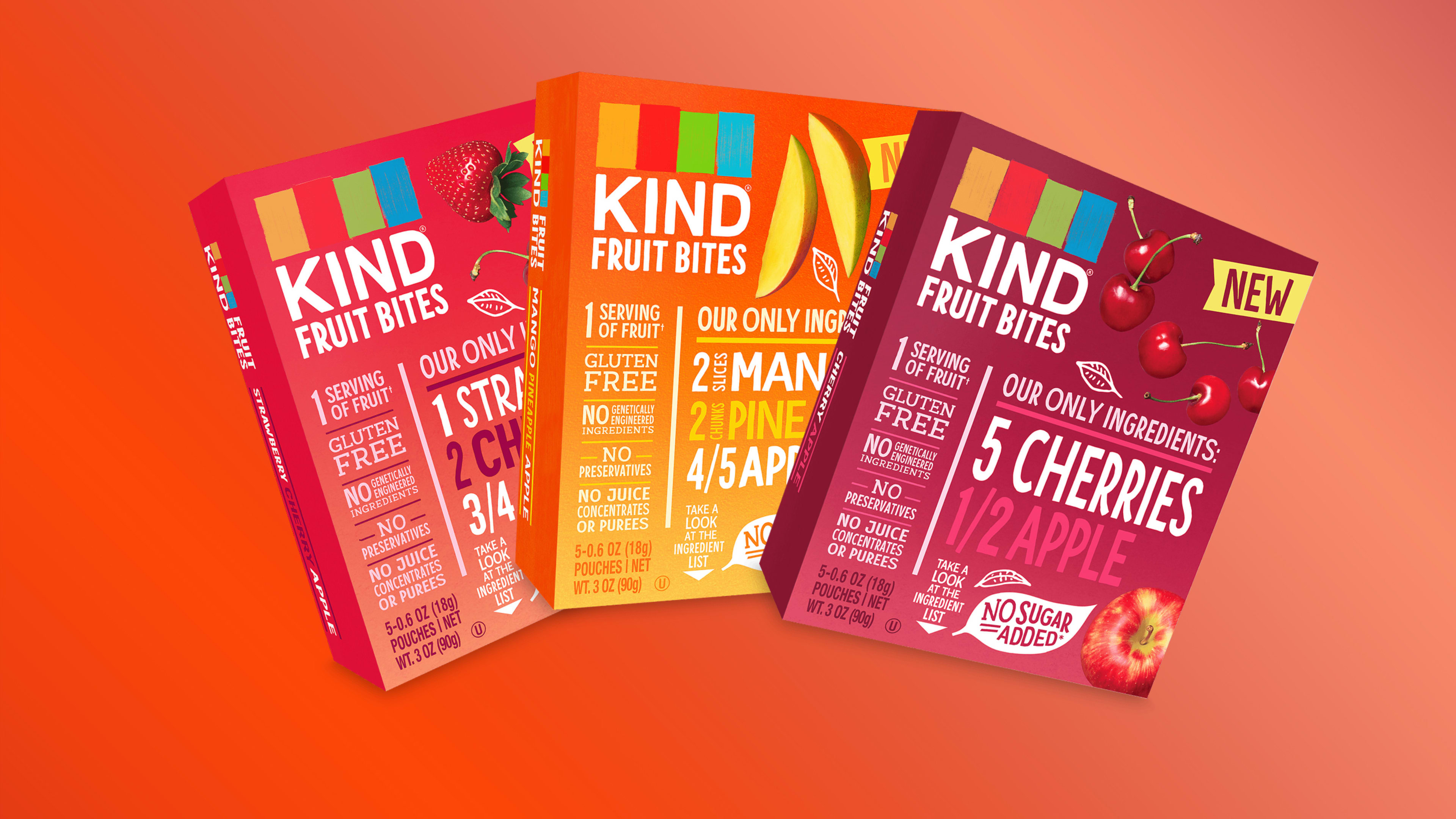Two years after launching a new line of fruit snacks designed to help kids eat healthier, the snack company Kind is pulling them from store shelves because of poor sales. It turns out, Kind’s Fruit Bites may have been a little too healthy and normal looking—especially when many Americans gravitate toward extra sweet and artificially colored foods.
“It is a moment of humility,” says Kind founder and CEO Daniel Lubetzky. Diehard fans can still buy Fruit Bites online. “But the journey is an interesting one . . . because it’s very instructive both for entrepreneurs, but also for society.”
When they launched in the fall of 2017, Kind’s Fruit Bites were available in flavors like strawberry apple cherry, cherry apple, and mango pineapple apple. The key ingredient was dried fruit, which let the company advertise that the bites contained no added sugar. The fruit-only ingredients meant no synthetic dies were used, either.

Kind’s iconic snack bars come in transparent packaging to show off the whole ingredients used inside. But Kind’s Fruit Bites packs weren’t see-through, and the actual product looked a lot different from its competitors: brown and quite organic looking. People seemed to really enjoy them in promotional taste tests, but it’s easy to imagine kids conditioned to expect brightly colored, sweet fruit snacks being disappointed by the replacement.
Kind’s recipe also didn’t necessarily have less sugar than other brands, the sugar just came from the fruit itself. That’s different than many gelatin-based fruit snacks, which the Center for Science in the Public Interest has warned against because they’re molded entirely out of unhealthy additives. The key ingredients are “mostly sugars (whether from corn syrup or concentrated fruit juice), modified cornstarch, artificial flavors, and artificial color/food dyes” making them more akin to gummy bears than actual fruit, according to a CSPI report.
About 95% of the category also uses synthetic dyes, according to a 2010 analysis by the CSPI. In fact, more than 40% of children’s foods use extra coloring. Kind promised to give parents something naturally sweet and natural looking, versus artificially sweet and extra bright.
Nutritional value aside, Lubetzky finds the fact that kids might be learning to eat by fake color cues disturbing. So while the snacks are leaving stores, Kind and the agency Bankrobber are planning a stunt warning about food dyes, with a giant installation in New York’s Herald Square. It features eight oversized test tubes filled with a total of 2,000 gallons of food coloring, the cumulative amount of synthetic dye that children in America consume each day, according to a grocery store analysis from 2014. CSPI has petitioned the FDA to ban synthetic dye use entirely because some types have been associated with hyperactivity in children and contained known carcinogens.

Anecdotally, it’s not hard to see that store offerings appear perhaps surreally bright these days. The production of such dyes has ramped up 500% since the 1950s, according CSPI’s research. That includes items in other aisles; while the data is several years old, it shows that at least 40% of chips and cracker offerings hewed to a similar game plan as of several years ago.
Kind’s test tube display shares more information about other products that often contain artificial coloring like microwave popcorn, pickles, and fruit cups. “We’re really doing a big disservice to society by training all these generations to expect things to be glistening and glow in the dark and such overly bright colors that are not consistent with how things really are in nature,” Lubetzky says. “Just like the problem of . . . training people to expect an undue amount of sweetness in everything they eat, so too is the problem distorting the reality field of kids by expecting them to find things that are glistening and overly bright.”
Kind could have just reformulated their Fruit Bites with some compromises. But Lubetzky decided against that, as it runs counter to the company’s social mission to provide healthy food made of whole ingredients so people understand what exactly it is they’re eating. “There is a huge delta between what kids for the most part have come to expect from this category and what we’re providing,” he says. “Our product looks like dry fruit and unfortunately that’s not as appealing as these other fun, glistening textures. I didn’t want to sacrifice our vision in order to sell more.”
Recognize your brand’s excellence by applying to this year’s Brands That Matter Awards before the early-rate deadline, May 3.
